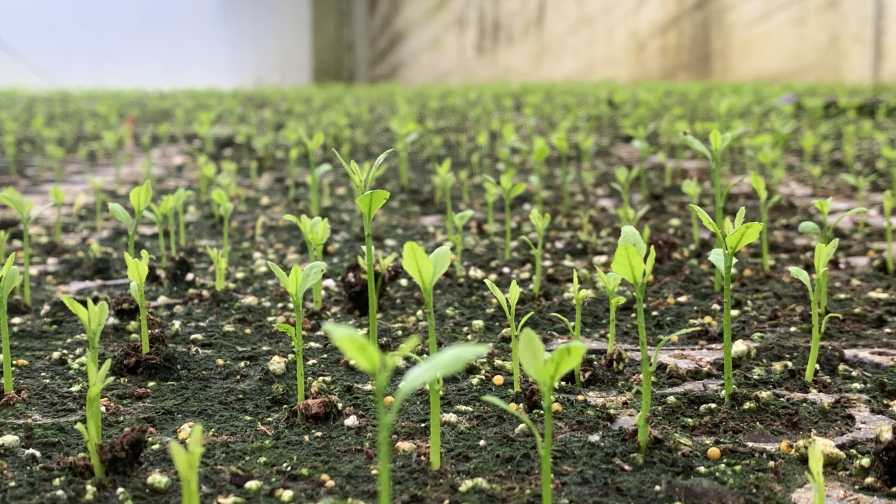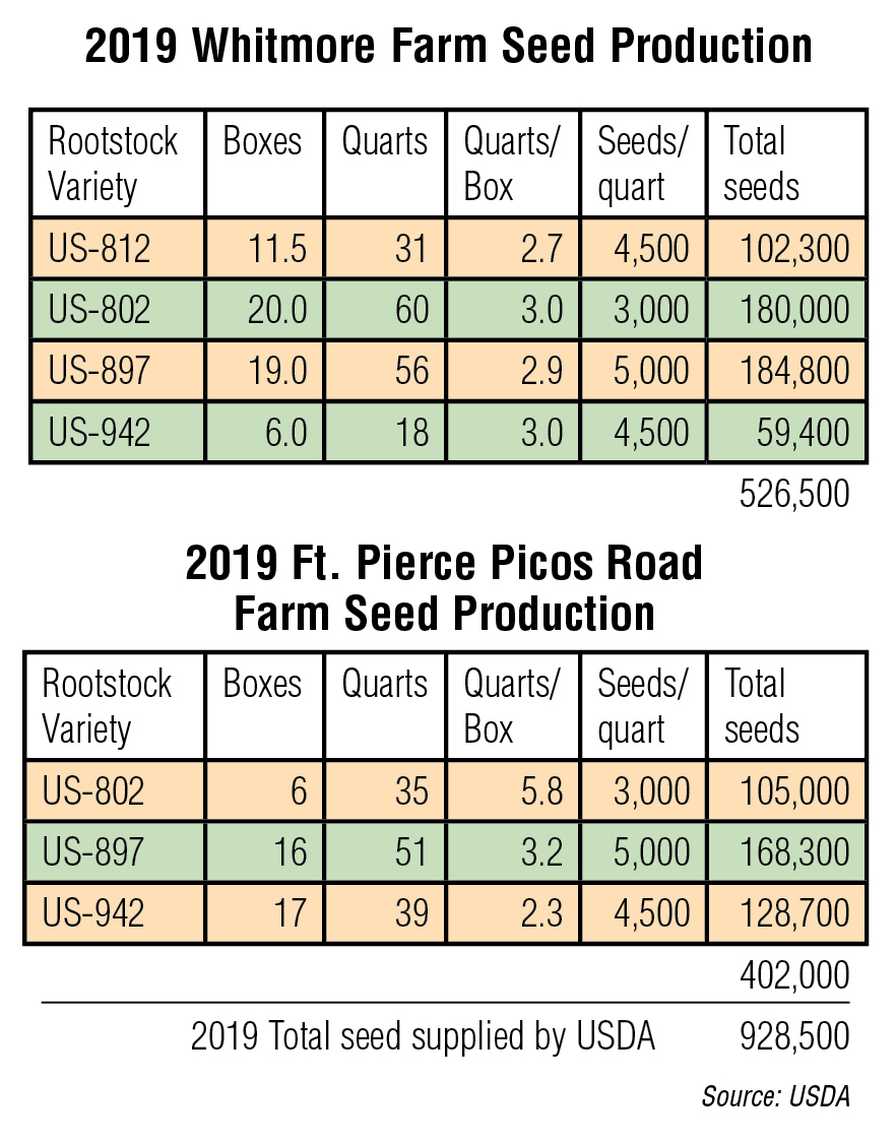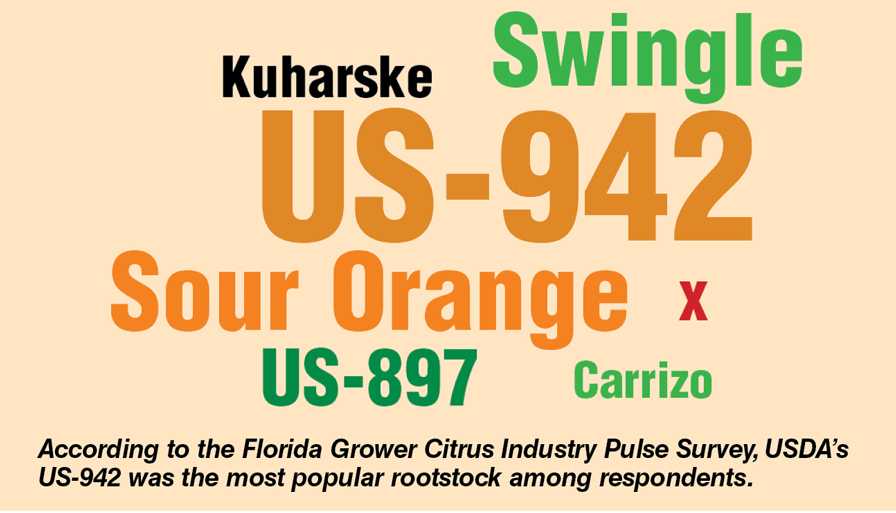
Rootstocks sprouting from seed at Phillip Rucks Citrus Nursery in Frostproof, FL.
Photo courtesy of Phillip Rucks Citrus Nursery
The Florida Citrus Research Foundation (FCRF) is the owner and co-managing entity of the A.H. Whitmore Foundation Farm located between Leesburg and Groveland. After the movement of the U.S. Horticultural Research Laboratory (USHRL) from Orlando to Ft. Pierce, the continued value and usefulness of the Whitmore Farm was called into question. Thankfully, cooler heads and forward-thinking leaders prevailed, and the facility remained committed to supporting citrus research in support of the Florida and U.S. citrus industries. The FCRB has a long-term contract with USDA-ARS to house facilities, equipment, research, and personnel at the 250 (arable) acre farm, predominantly, though not entirely, to USDA-ARS citrus research.
The FCRF board has experienced significant change in recent years. Key and long-term members have retired, and it has sometimes been challenging to attract board participation for a research site located in north Lake County. Board President and Chairman Phillip Rucks and USDA USHRL Lab Director Brian Scully have placed a strong focus on restoring the board to full strength and to seek ways to continue strong support for USDA-ARS research, while also looking for new ways to use the farm to support industry.
Seed Increase
Considering the continued strong demand for rootstock seed, Whitmore Farm leadership is looking to expand production of rootstock seed at the farm and is working with the USDA-ARS to leverage seed production from plantings at the USDA-ARS Picos research farm in Fort Pierce. Below is a representation of the current production of the four most popular USDA-ARS citrus rootstocks:

Though the Picos and Whitmore Farms are producing approximately 25% of the seed used for all Florida nursery propagations, much more can be done. The FCRF board views increased rootstock seed production as having a dual benefit. Seed produced and distributed through FNGLA’s Citrus Nursery Division helps meet the propagation needs of Florida citrus nurseries, and sale of the seed provides much needed operating revenue for the farm. Despite the existence of 36 seed source blocks in Florida, seed demand continues to constrain production due to continuous HLB disease effects and recovery from recent hurricane losses.
Sorting Winners and Losers
In anticipation of increased seed demand, and to get ahead of the anticipated demand for newly released USDA rootstock selections, a collection of rootstock trees were planted at Whitmore in 2017. This included 65 trees of US-802 and US-942, propagated on rootstocks in equal portions of Cleo, Sour, Swingle, and Volk. It also included 69 trees of US-1279, US-1281, US-1282, US-1283, US 1284, US-1516, and US-896. Some of these were a roll of the dice when planted in an effort to stay ahead of the curve. Now, almost three years down the road, the US-896 trees will be removed because this selection was not released, and other selections are being removed because they cannot be propagated from seed and will need to be produced by cuttings or tissue culture. Removing these trees will make room for additional, new rootstock trees, for which near-term demand is anticipated.

The FCRF board is in discussion about the options, and new trees should be in process by the time this article hits the presses. Because there is a cost associated with maintaining state registration and disease testing for each seed source tree, it is important that the low-demand trees be regularly culled and replaced with the industry’s best crystal ball guess of the “next great thing.” There also must be accommodation for old-line rootstocks, such as Willits Citrange, for which there is at least a reasonable expectation that they might perform better than average, and a reliable seed source would be of benefit. There also may be excess demand for rootstocks from other programs or sources.
Rootstock seed production requires time, but it’s not as long a turn-around as you might think. Seed production generally starts when the trees are two years old. By age three, these new trees will be producing just shy of an average of one box of fruit per tree. They will be in full production by age five. Though different rootstocks produce different fruit size and quantity, it is reasonably safe to expect 2.5 to 3 quarts of seed per mature tree.









